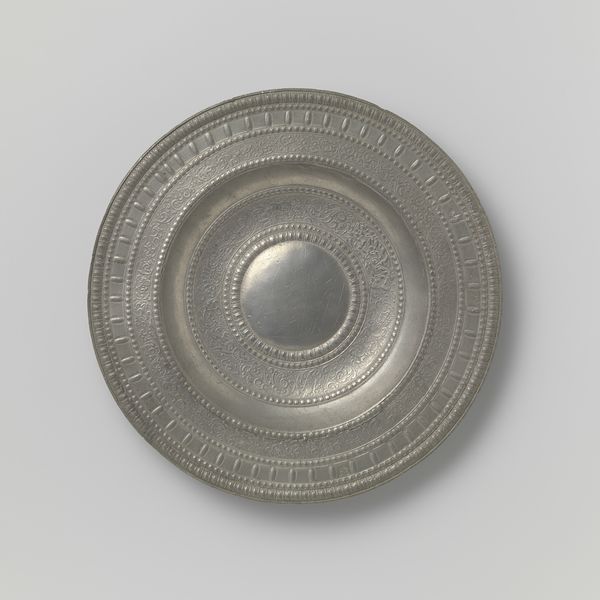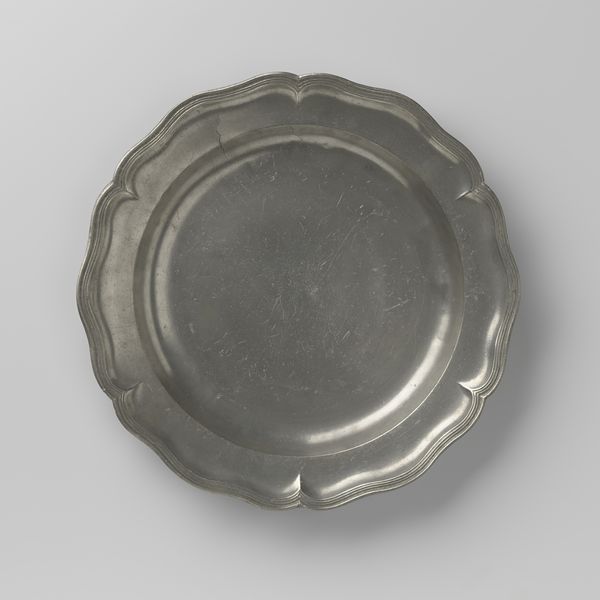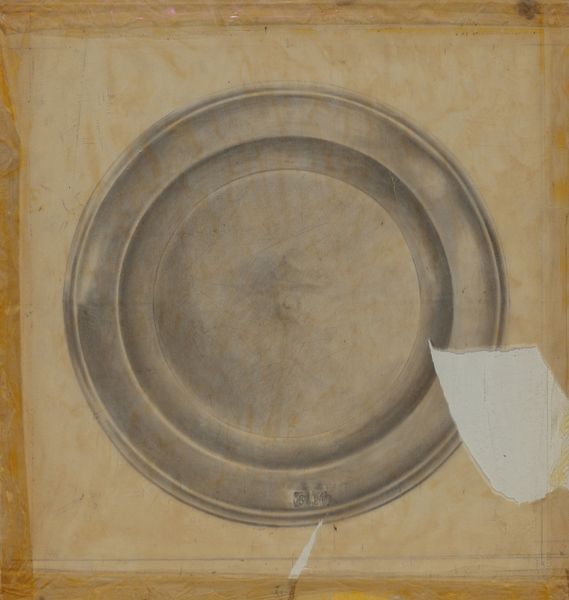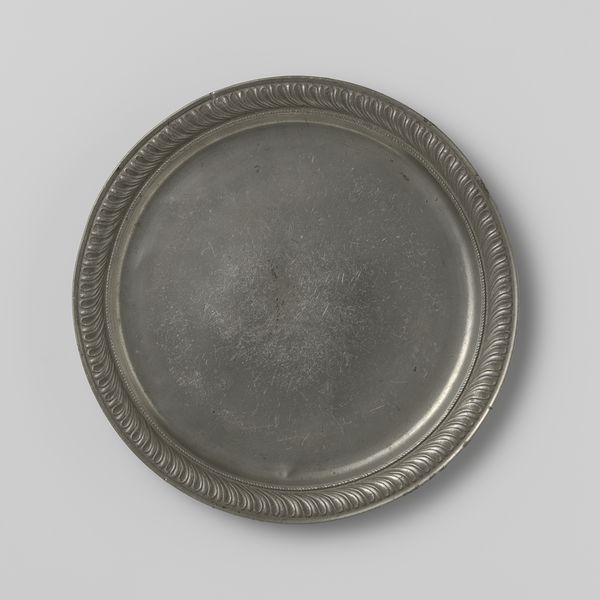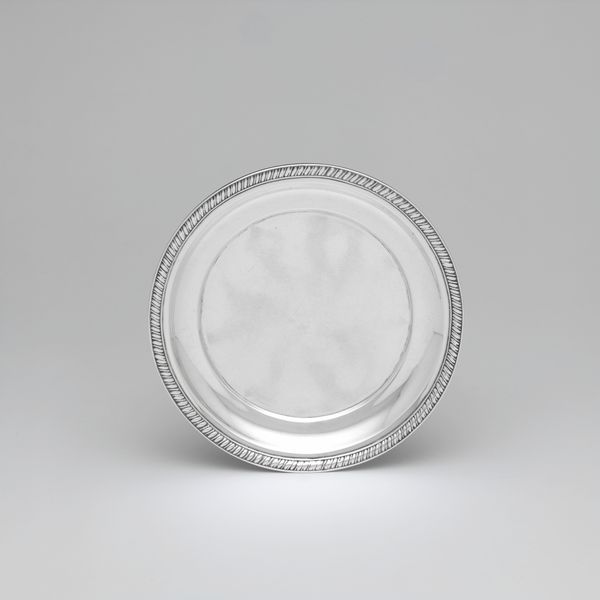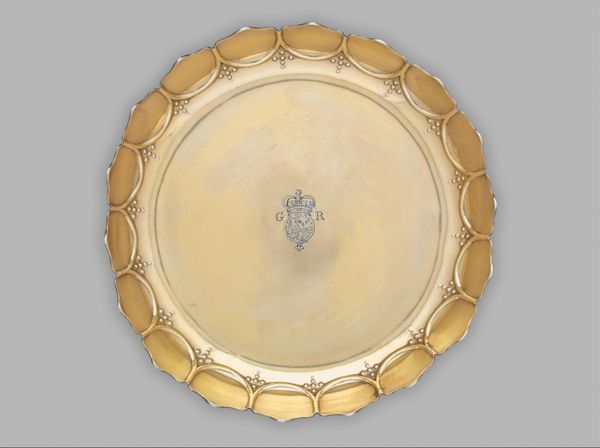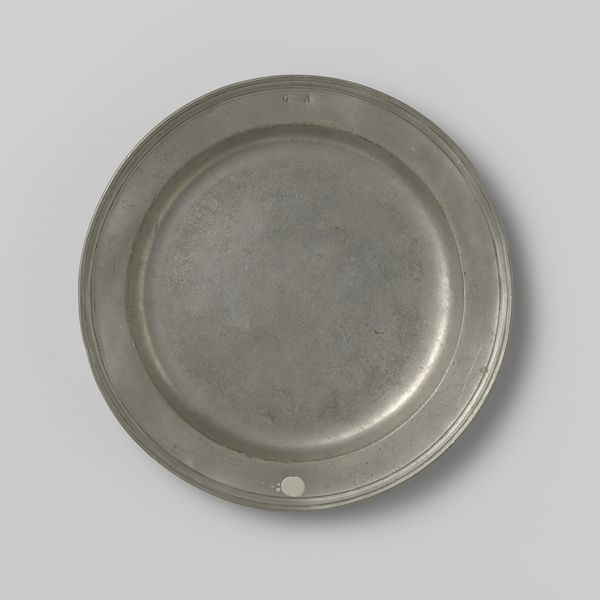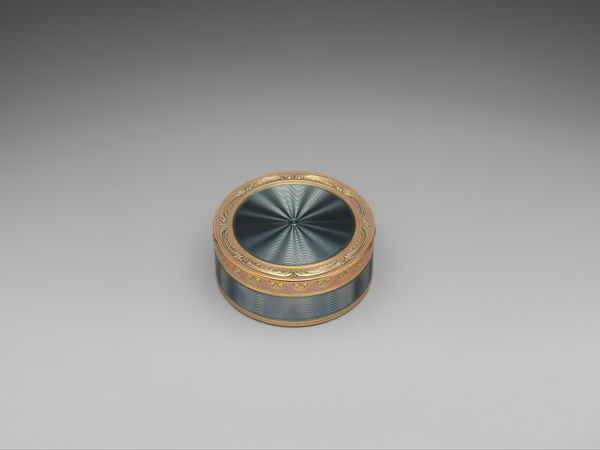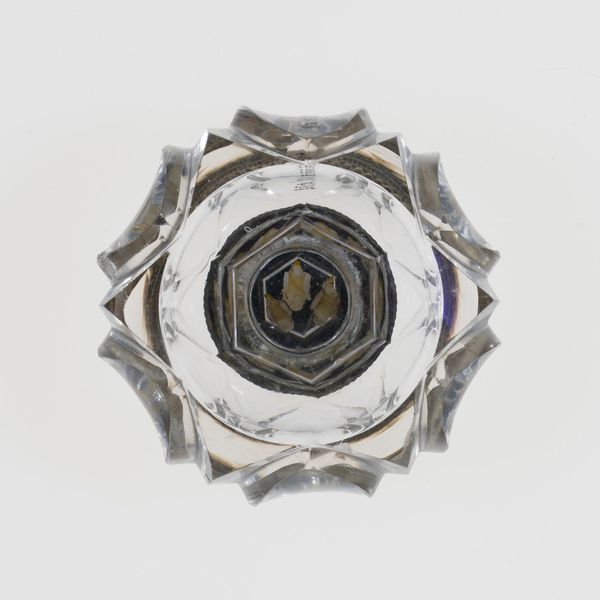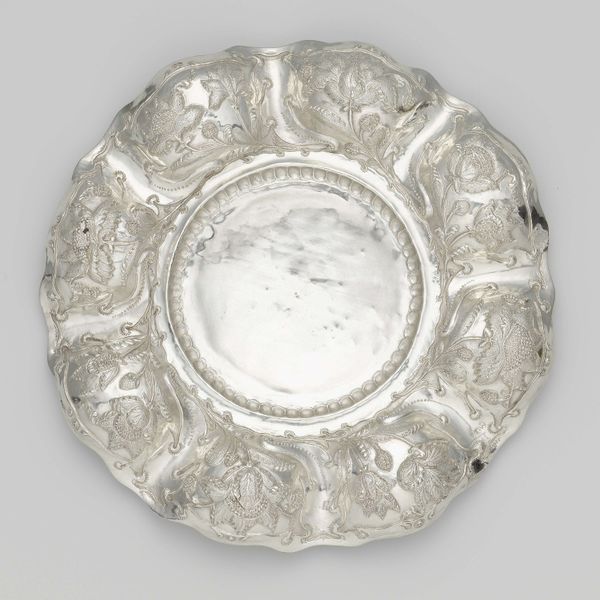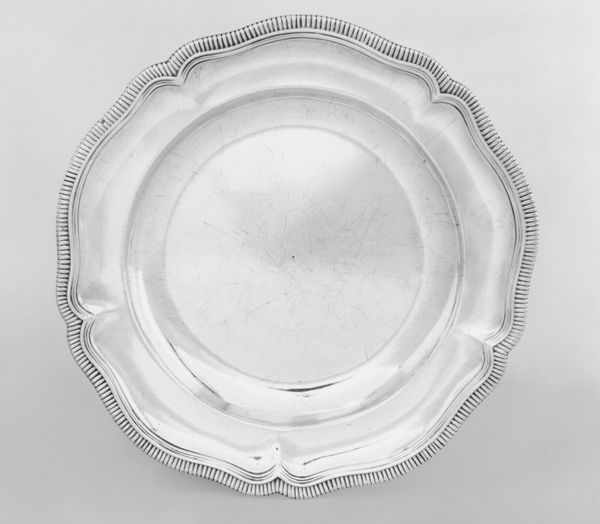
silver, metal, ceramic
#
silver
#
neoclassicism
#
metal
#
ceramic
#
ceramic
Copyright: Public Domain
Editor: So, here we have a silver plate, dating back to around 1807. It's currently held in the collection of the Minneapolis Institute of Art and looks remarkably pristine, if I do say so myself. It's relatively simple but incredibly elegant and really makes me wonder who might have owned something like this. What can you tell me about it? Curator: Well, on the surface, it presents a typical Neoclassical aesthetic—order, symmetry, restraint. But I’m curious, what story does this plate conceal about the socio-economic realities of its time? Consider who had access to silver, and what the owning and displaying of this object represented. Editor: Right, the access to silver is an interesting factor to consider, and speaks to class! Curator: Precisely. This seemingly innocuous plate could also be viewed through a postcolonial lens. Where did the resources to create this object come from? Who were the laborers involved in the mining and processing of the silver? Editor: Ah, so it's not just about aesthetics, but also about the historical baggage it carries—connecting to broader power dynamics! It's humbling, and a little discomforting. Curator: Absolutely. Think about the hidden narratives embedded within the material itself and the global exchange networks it implies. Was this plate part of a larger set used to signal status and reinforce social hierarchies? Or could it have played a role in commemorative rituals of a given population of people at a specific time? Editor: I guess a seemingly simple plate becomes a potent symbol of so much more when you dig a little deeper! Curator: Exactly. It's a reminder to critically examine even the most 'innocent' objects and unearth their complex connections to larger social and political structures.
Comments
No comments
Be the first to comment and join the conversation on the ultimate creative platform.
